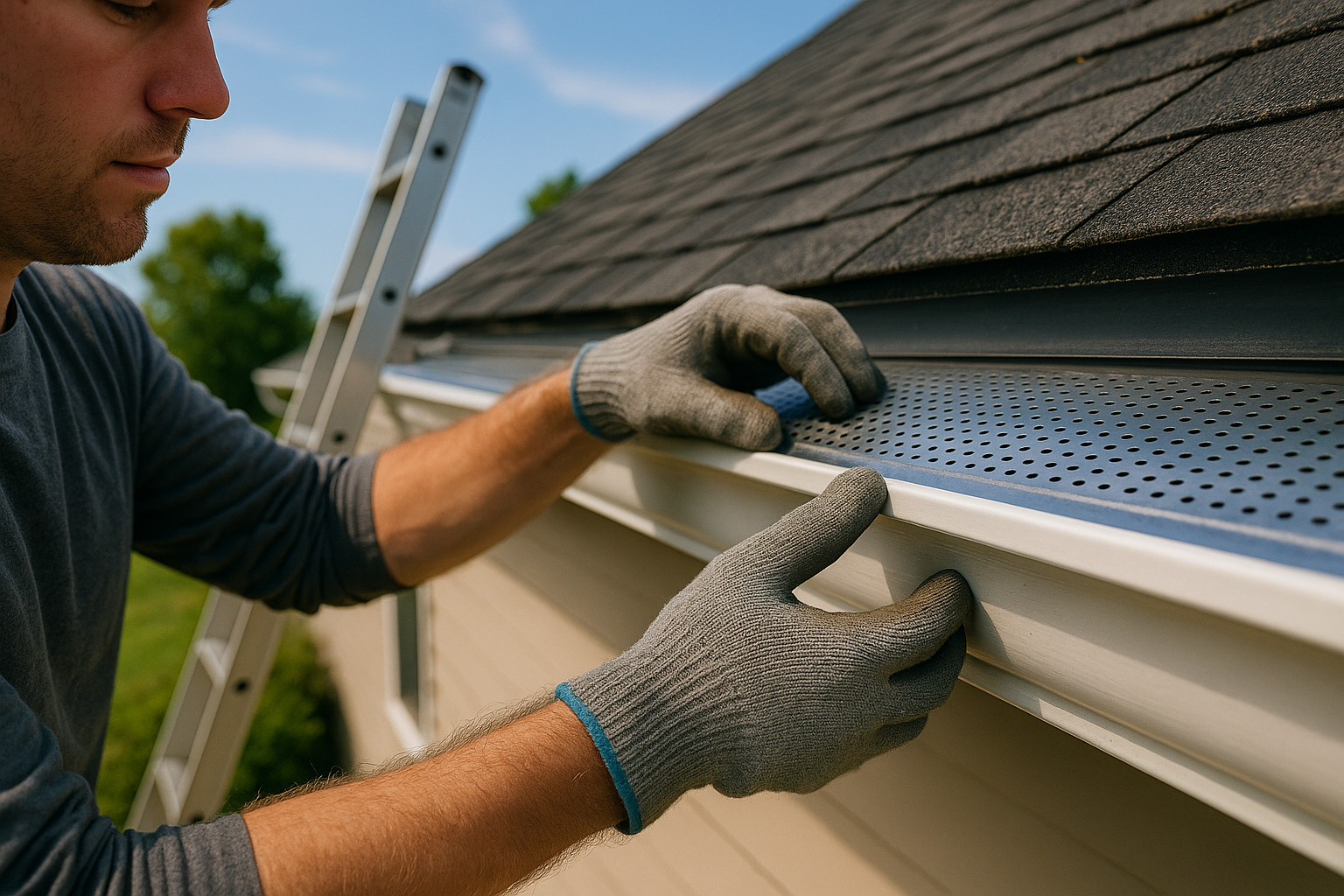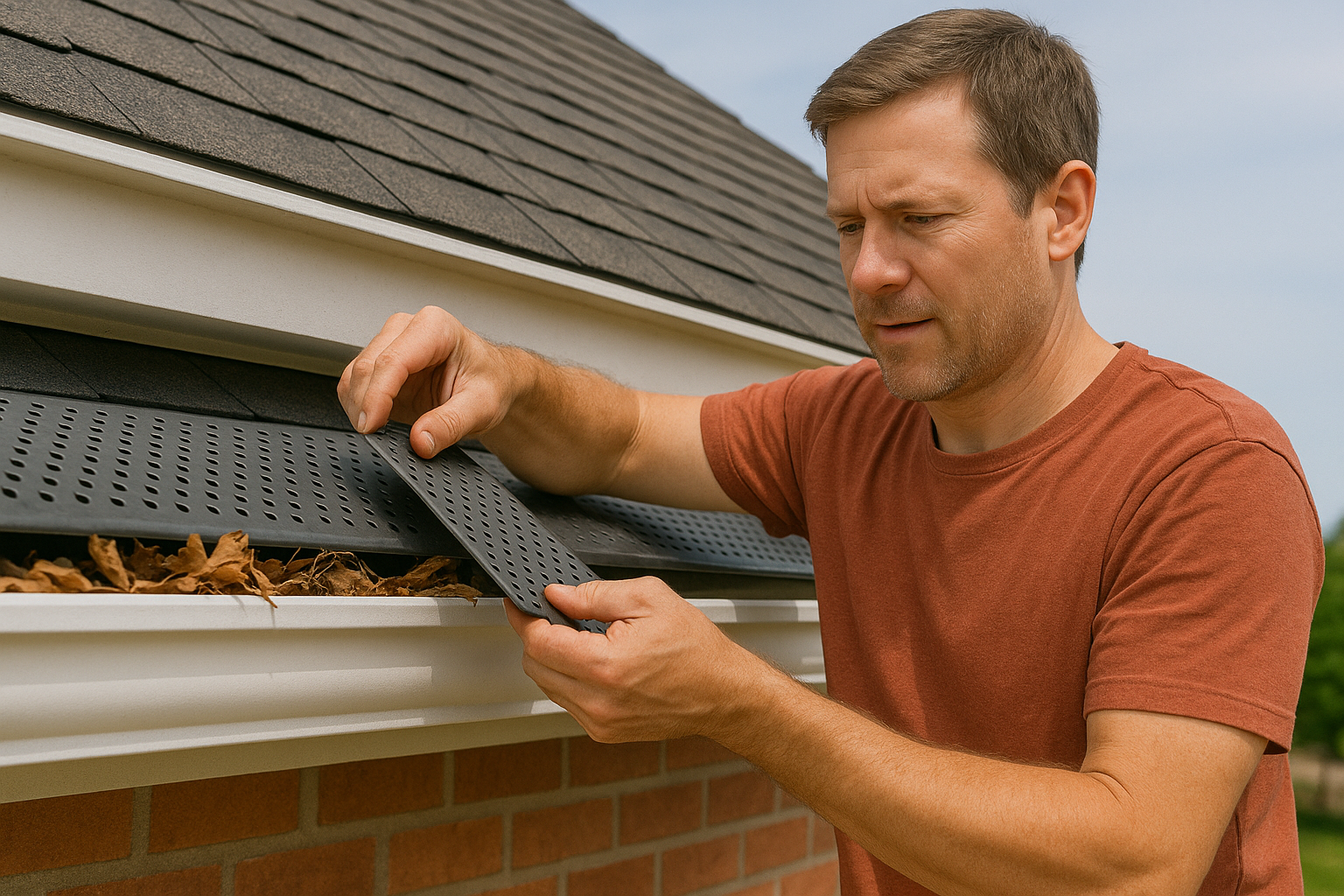Easy Steps to Remove Gutter Guards and Clean Your Gutters Properly
Keeping your gutters clear and flowing is one of the most important tasks in seasonal home maintenance—but if you have a gutter guard system installed, you might be wondering how to clean underneath properly. Whether you're facing clogged gutters, visible overflow during heavy rain, or simply doing routine upkeep, it's essential to know how to safely and effectively remove gutter guards without causing damage.
This guide provides a comprehensive, step-by-step approach to cleaning your gutters, whether with guards in place or when you decide to remove them. Learn which tools you’ll need, what to watch out for, and how to put everything back together once your gutter cleaning is done. A clean gutter means better water flow, fewer problems with pests or mold, and a longer-lasting gutter protection system.
Key Takeaways
- Most gutter guards are designed to be easy to remove, whether they’re attached with screws or clips.
- Proper safety practices and tools, such as a sturdy ladder, work gloves, and a garden hose with a spray nozzle, make cleaning safer and more efficient.
- Different types of gutter guards—like foam and brush gutter guards, mesh gutter guards, and micro-mesh gutter products—require slightly different cleaning techniques.
- Cleaning should be done at least twice a year to prevent the buildup of loose debris, pine needles, dirt, and falling leaves that can clog the gutters.
Why do you need to remove gutter guards for thorough cleaning
If you're seeing water spill over the edge of the roof or notice water damage near your fascia, your gutter guard might be hiding more than it's preventing. Gutter guards can trap twig, seed, and leaf debris under the mesh or foam if not cleaned routinely.
In many cases, you need to remove the guards to get inside the gutter and clear out compacted gunk. Even systems marketed as clog-free can become blocked at the shingle line or along the roof overhang, especially in homes with dense foliage or poorly angled gutter setups.
Types of gutter guards and how they’re installed
Mesh gutter guards
These guards are typically made from metal or nylon mesh and sit on top of the gutter, covering it to block leaves while allowing water to pass through. They may be held in place with metal clips, tension, or screws.
Foam and brush gutter guards
Foam guards fit inside the gutter, forming a barrier against debris. Brush types look like overgrown pipe cleaners and also rest inside the channel. Both are easy to remove, but they collect organic material more quickly and require more frequent cleaning.
Micro-mesh gutter products
These advanced options are part of a high-end gutter protection setup. They're more durable and often fastened with hardware. They can be removed, but it's important to follow the manufacturer's instructions or hire a professional for reinstalling.
Safety first: equipment you’ll need
Never climb a ladder without preparation. When it comes to cleaning gutters, especially while removing guards, safety is non-negotiable.
- Sturdy ladder (preferably with a stabilizer)
- Work gloves to protect against sharp debris
- A trowel or a small scoop to remove dirt and debris
- Screwdriver (if your guards are attached with screws)
- Garden hose with a spray nozzle or leaf blower
- A bucket or a tarp to collect the mess
Use caution around the shingles and edges to prevent water intrusion or damage to the roof.
Step-by-step guide to remove the gutter guards
Step 1: Set up your ladder
Place your ladder securely on flat ground. Avoid leaning against the gutter itself, as this can bend or crack the material.
Step 2: Carefully remove the guards
Gently lift the gutter guard at the edge. If the guards are fastened with metal clips or screws, use your screwdriver to remove the gutter guards without damaging the surrounding shingles or the roof edge.
Step 3: Clear out the debris
Use a trowel or your gloved hand to scoop out any loose debris inside the gutter. Common culprits include pine needles, mud, and decomposed falling leaves that clog the bottom of the gutter system.
Step 4: Rinse thoroughly
Using a garden hose, flush out any remaining dirt. Aim the nozzle toward the downspout to ensure complete water flow through the system. You can also use a pressure washer, but be careful not to damage the gutter or roof materials.
Clean gutters with gutter guards still installed
Some homeowners prefer to clean gutters with guards in place, especially when using mesh guards that are partially see-through. In these cases, you can use a leaf blower on top of the guards to dislodge lighter debris.
For deeper cleaning, lift the top of the guards slightly, rinse them under with a hose equipped with a spray nozzle, and clear the clog from beneath.
However, skipping full removal often means you’re leaving behind dirt, clogs, and moisture that can build up over time and reduce the lifespan of your gutter guard product.
How to inspect the gutter guard system after cleaning
Once you’ve cleaned the gutter, take a moment to inspect the condition of the gutter guard, gutter board, and surrounding roofline.
Look for:
- Clogged downspouts or slow drainage
- Warped or broken guards
- Disconnected clips or fasteners
- Mold buildup near the soffit or fascia
- Overflow or damage near the shingle line
A quick inspection can save you from seasonal issues or mid-storm emergencies.
Reattaching or replacing the gutter guards
After cleaning, it's time to reattach or reinstall the gutter guard. Ensure the area is dry before replacing the guards, especially if you need to scrub away mold or reapply caulk around fasteners.
For guards that were secured with screws or clips, reinsert the hardware carefully to avoid damaging the gutter edge or the fascia beneath it. If the guards are made of foam or brush, drop them back into place.
If your system shows significant wear or doesn’t stay in place properly, it may be time to install new gutter guards or consult a roofer or home improvement expert for upgrades.
How often should you clean your gutter guards?
While many gutter guard products promise long-term performance, you should still plan to clean your gutters and inspect your system at least twice a year—once in spring and once after the leaves fall.
More frequent cleanings may be necessary if:
- You live near pine trees or heavy foliage
- Your roof has a shallow pitch that slows drainage
- You’ve recently experienced heavy rain or windstorms
Regular maintenance ensures your gutter protection system continues to keep your home dry and your roof in good shape.
When to hire a professional for gutter guard removal
If your roofline is steep, your home is more than one story tall, or your gutter guards are complex or professionally installed, it’s often best to hire a professional.
A certified roofer or gutter technician will be familiar with how to carefully remove the guards and reinstall them properly, without damaging the shingles, fascia, or gutter system. This is especially helpful if you're planning a full roof replacement or considering switching to a new gutter protection setup.
Frequently asked questions
How do I know when it's time to remove my gutter guards
If water is spilling over your gutters, you see visible plant growth inside the guards, or notice clogging despite the guards, it's time to clean or remove them.
What tools are needed to remove gutter guards?
At minimum, you’ll need a screwdriver, a trowel, work gloves, and a garden hose with a spray nozzle. For tougher cleaning, a pressure washer or leaf blower may be useful.
Are gutter guards easy to remove
Most gutter guards are designed to be easily removable, especially those made of foam or mesh. Systems attached with screws or clips require a bit more effort.
Can I clean gutters without removing the guards?
Yes, but it’s less thorough. You can lift part of the guard and rinse underneath, but full removal ensures a deeper clean and allows better inspection.
Will removing guards damage my roof
Not if done properly. Use care around the shingles, and don’t force hardware. If unsure, call a roofer to avoid causing damage to the roof or fascia.
Conclusion
Your gutter guard system is there to make life easier, but that doesn’t mean it never needs attention. Whether you’re doing seasonal cleaning, dealing with overflow, or simply maintaining your home improvement checklist, knowing how to remove gutter guards and clean your system safely can help protect your investment for years to come.
Need help getting the job done safely and efficiently? Our team can handle your gutter guard removal, inspection, and full clean-out in one hassle-free visit. Reach out today to schedule your service and keep your gutters clear, your roof dry, and your home protected.





